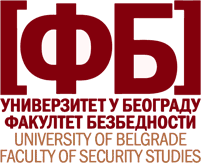Приказ основних података о документу
Intelligence Analysis Models for Asymmetric Threats
| dc.creator | Dimitrijević, Ivan | |
| dc.creator | Stekić, Nenad | |
| dc.date.accessioned | 2020-01-08T16:51:55Z | |
| dc.date.available | 2020-01-08T16:51:55Z | |
| dc.date.issued | 2018 | |
| dc.identifier.isbn | 978-86-335-0594-9 | |
| dc.identifier.uri | https://rhinosec.fb.bg.ac.rs/handle/123456789/391 | |
| dc.description.abstract | Intelligence analysis in the 21st century, in the light of (post)modern security challenges, vulnerabilities, and threats, is completely adjusted to achieving asymmetric advantage, primarily through development of new techniques and methods for obtaining the data, but also with the use of new and more diverse information sources. New Information and Communication Technologies not only allowed to possible asymmetric threat subjects to increase their capabilities, but also required from nations to adapt their own capacities in new circumstances. The old threat paradigm (Cold War, traditional) asked for appropriate intelligence paradigm based on clear threat(s) holder and relatively known outcome of potential conflict (Mutually Assured Destruction). The new threat paradigm (post-Cold War, post-modern) expanded its focus on the new spectrum of security challenges, vulnerabilities and threats, whose subjects are no longer single nations and their national security capacities. New circumstances are additionally ‘aggravated’ by the fact that the post-Cold War period is at the same time the age of information and communication technology ‘explosion’, which certainly and largely effected the increase of academic community interest and stimulated research and development of appropriate intelligence models for the analysis of new threats in the new environment. In that manner, new intelligence analysis knowledge and skills were developed, especially in the context of situation development analysis in contemporary asymmetric conflicts. The most common models used for the asymmetric threat analysis are advanced systems for threat modelling, as well as models for analysis and response to asymmetric threats. In this paper, we present a brief chronological preview of transformation of the “old threat paradigm” into the new threat paradigm, from academic perspective, with recognizing the key elements that affected the improvement of national intelligence capacities. Then we gave a preview of some of the most significant intelligence analysis models in the context of new threat paradigm, and we explain their mutual relationship. | en |
| dc.publisher | Belgrade : Strategic Research Institute & National Defence School | |
| dc.publisher | Belgrade : Media Center "Odbrana" | |
| dc.rights | openAccess | |
| dc.source | Asymmetry and Strategy : thematic collection of articles | |
| dc.subject | intelligence analysis | en |
| dc.subject | asymmetric threats | en |
| dc.subject | analytical models | en |
| dc.subject | asymmetric advantage | en |
| dc.title | Intelligence Analysis Models for Asymmetric Threats | en |
| dc.type | bookPart | |
| dc.rights.license | ARR | |
| dcterms.abstract | Стекић, Ненад; Димитријевић, Иван; | |
| dc.citation.spage | 653 | |
| dc.citation.epage | 668 | |
| dc.citation.other | : 653-668 | |
| dc.type.version | publishedVersion |

